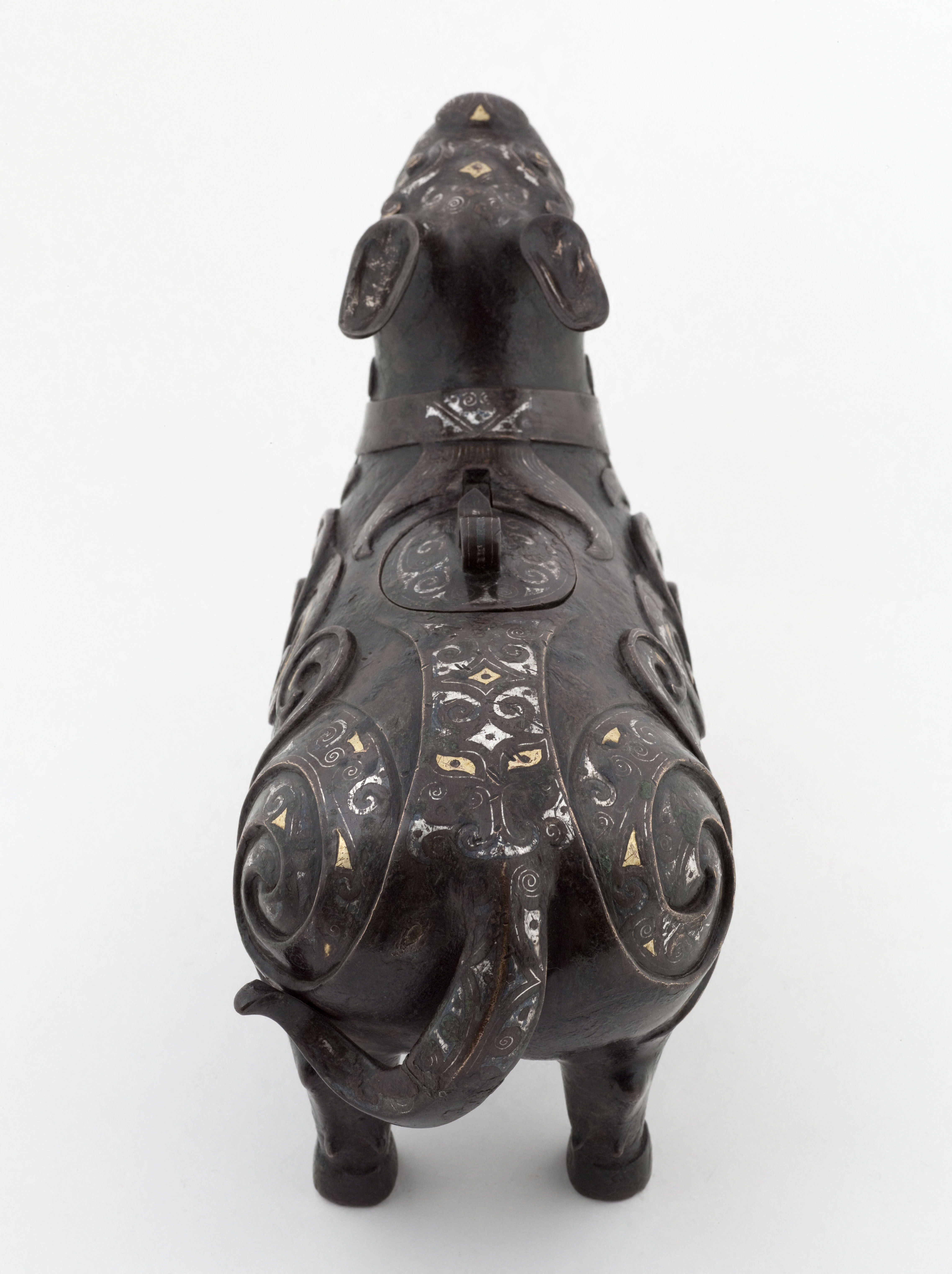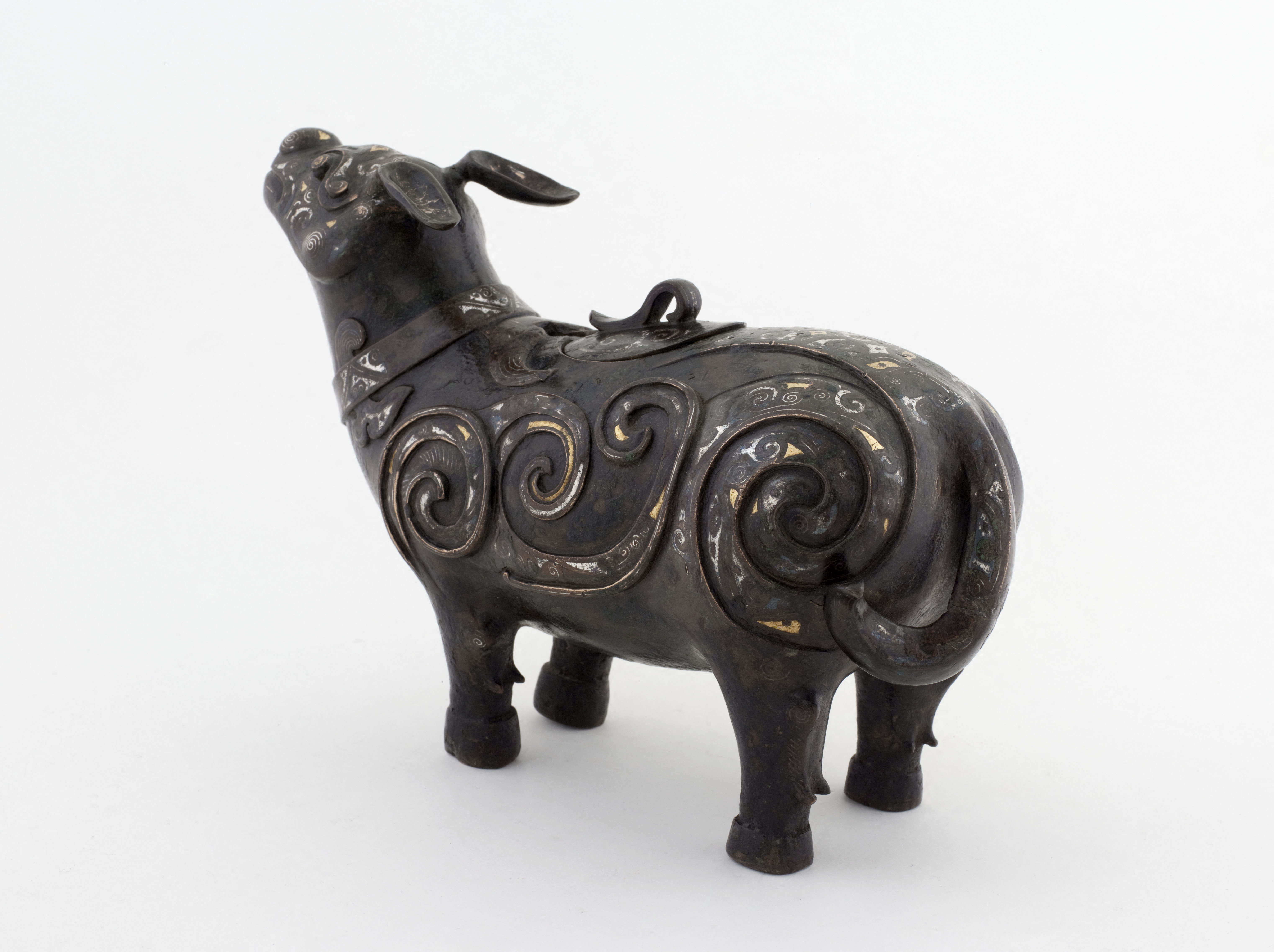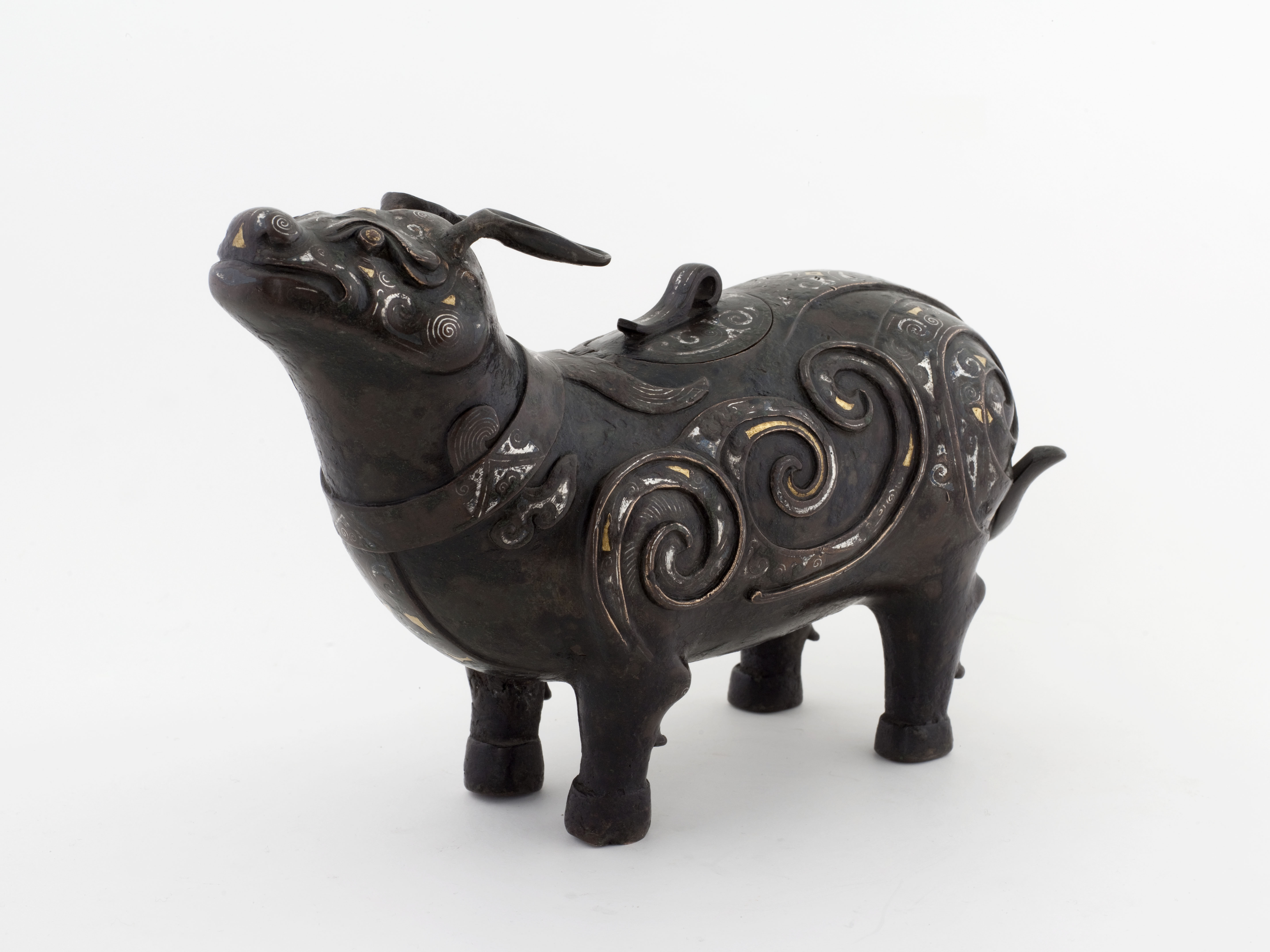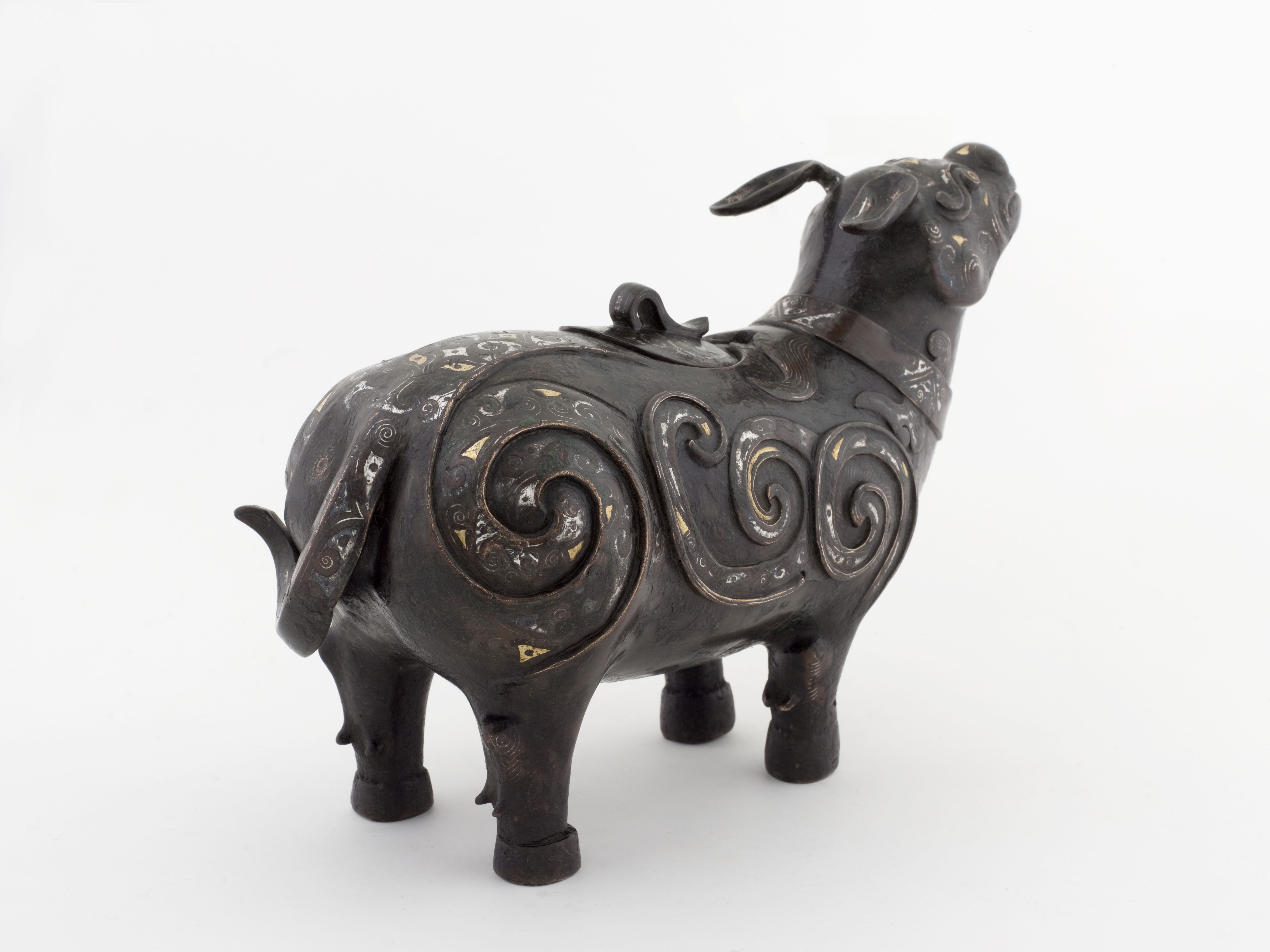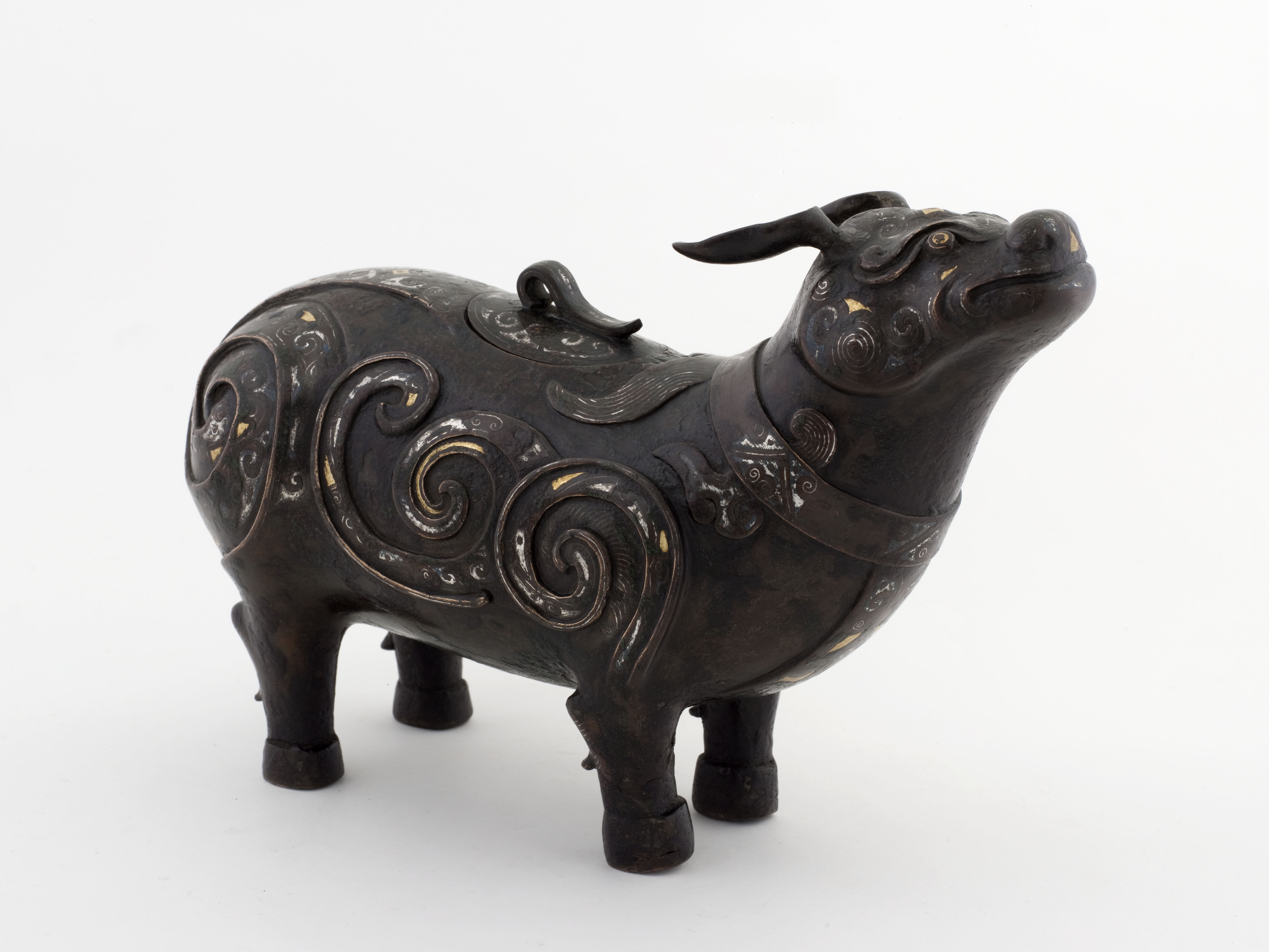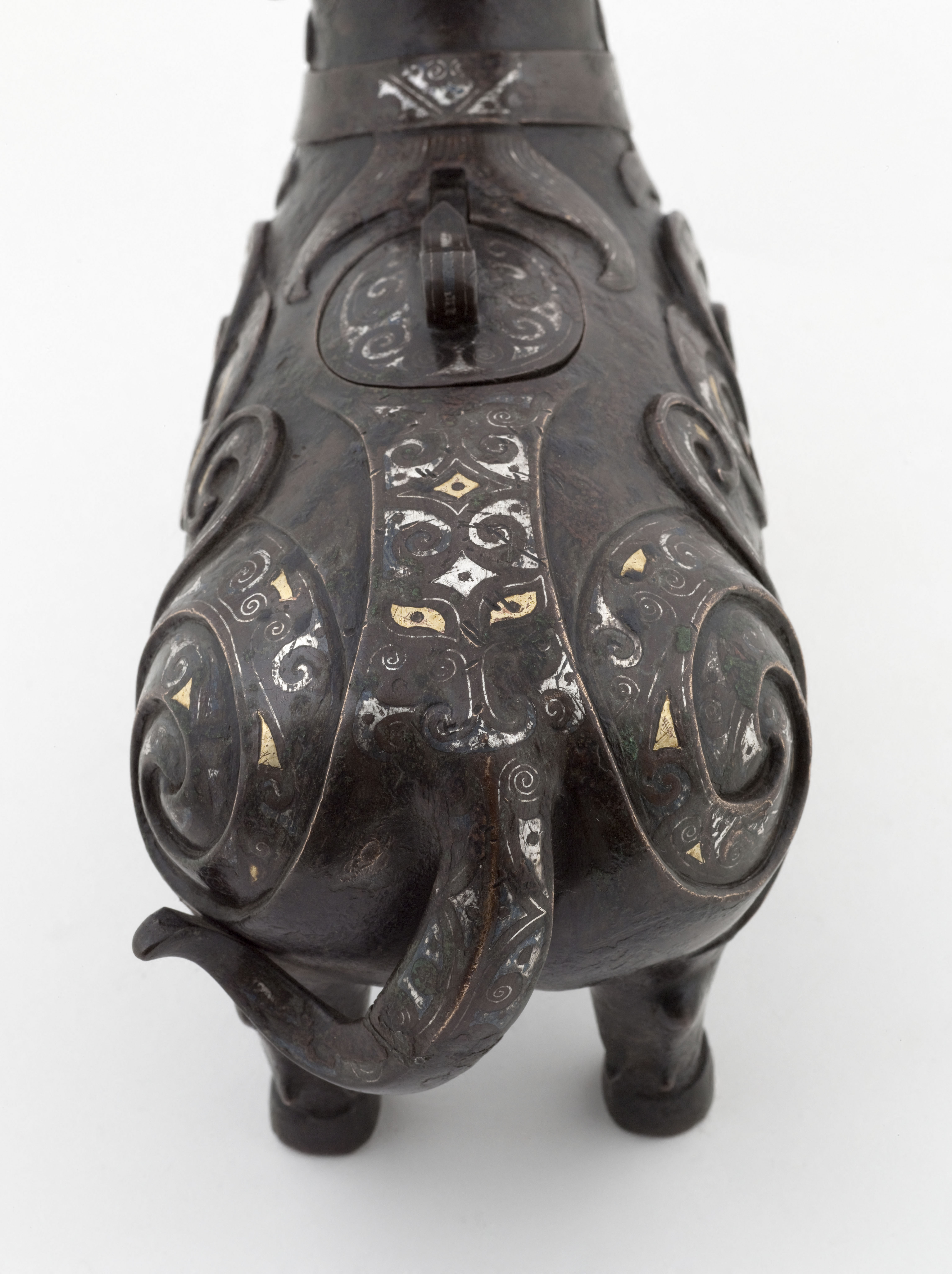
Vase xizun 犧尊 en forme de tapir
Bronze, Fonte à la cire perdue, Incrustation
Vase
Legs : Cernuschi, Henri
M.C. 583
While these vessels are today called mozun 貘尊 (“tapir[-shaped] vessel”), their ancient name is xizun 犧尊, which appears in the Bo gu tu and the Xiqing gu jian (Catalogue of the antiquities in the Xiqing pavilion). The word xi means “sacrificial victim” and often refers to an ox, sometimes another animal. The original model of these tapir-shaped vessels, dating from the Warring States period, was decorated with incrustations of precious metals.
Nowadays there are four species of tapir, three in South America and one in Malaysia. In China, in the Eastern Zhou period, the tapir appears to have been a wild animal, or perhaps one imported from afar, but which could be observed, at least in captivity.
While specimens of these vessels dating from the Song and Yuan dynasties have been discovered in China, none of them have incrustations. One pair, dating from the Song dynasty, was found in Huzhou, Zhejiang (National Palace Museum, Taipei); another was found with a vessel in the shape of an ox. All differ from the pieces that are now systematically dated to the Yuan period. In the San li tu (Illustrated Treatise of the Three Rituals) the xizun is written 戱尊; it is shown as a vessel bearing the figure of an ox or bird. There is no example of a tapir-shaped vessel in the Kao gu tu either; the Bo gu tu gives two examples. In the Da Ming ji li 大明集礼 (Collected Rituals of the August Ming, 1529), mention is made of this utensil, with an illustration. The iconography was thus gradually established.
These vessels are often dated to the Yuan dynasty (1271-1368) despite their considerable stylistic and technical differences, and notwithstanding the fact that pieces of this type found by archaeologists do not resemble them. The only publication offering a plausible dating is that of Sydney L. Moss: reaffirming the comments of Ulrich Haussmann regarding the resemblance between these bronzes and those attributed to Hu Wenming, he prefers to date to the late Ming period a specimen that is quite similar to the one presented here. In fact, the great majority of known vessels – there are no fewer than five or six in the Cernuschi collection – date, at the earliest, to the late Ming or even Qing dynasties. Although it is very different in appearance, one xizun has a quite similar design at the bottom of the back and on the tail; it has been dated to the late 16th century or early 17th century (Saint Louis Art Museum and Robert E. Kresko Collections, St. Louis).
Zhang, Chang 张昌 , [ 元賽因亦答忍墓的发现 ], dans Wenwu 文物 , 1996, n°2, p. 22-33
Xi ding san li tu 新定三礼图 (Traité illustré révisé des Trois Rituels) [San li tu 三礼图 (Traité illustré des Trois Rituels), par Nie Chongyi 聶崇義 , 962], édition non datée, présumée de 1676.
Haussmann, Ulrich, « Later Chinese Bronzes », dans Moss, Sydney L., In Scholar’s Taste. Documentary Chinese Works of Art, Londres, Sydney L. Moss, 1983.
Moss, Sydney L., In Scholar’s Taste. Documentary Chinese Works of Art, Londres, Sydney L. Moss, 1983.
Hu, Philipe K., Later Chinese Bronzes, cat. exp., Saint-Louis: The Saint-Louis Art Museum and Robert E. Kresko Collections, 2008.
